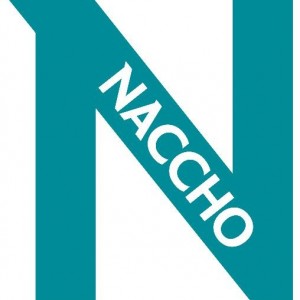By Dana Fields-Johnson, MPA, Program Manager and Sarah Mittermaier, Communications Coordinator, Prevention Institute
As thousands of cities and counties hard-hit by the opioid crisis move closer to settlements with opioid manufacturers and distributors, it’s time to talk about how communities can use these funds to meet urgent needs for treatment and invest in what it will truly take to stop this epidemic: preventing people from becoming addicted to opioids in the first place.
As we face up to the magnitude of the opioid crisis—estimated to have cost the U.S. over $1 trillion from 2001 to 2017, with a human toll that can’t be calculated—we need to learn from what has and hasn’t worked in past public health settlements and set more stringent parameters around how opioid settlement funds will be used.
Twenty-one years ago, 46 states reached a historic settlement agreement with the four biggest tobacco companies. But as the Campaign for Tobacco-Free Kids revealed last year, many states didn’t live up to the commitments they made to preventing tobacco use. While some states invested heavily in anti-smoking campaigns and tobacco cessation programs, many states used settlement funds to fill budget shortfalls or cut taxes, while underfunding prevention.
This time around, we can’t afford to skimp on prevention. Reining in bad corporate actors who have pursued profits at the expense of our nation’s health and providing treatment for those struggling with substance misuse and addiction won’t bring this epidemic to an end on their own. These efforts must be accompanied by approaches that address the underlying social and economic conditions that made communities vulnerable to opioid misuse from the beginning.
So, what does prevention mean when it comes to opioids? Often, people use the word prevention to refer to efforts like distributing naloxone to stop opioid overdoses and deaths—and that’s urgent and important. But, more attention is needed toward “primary” prevention—preventing opioid and other substance use and misuse from the start by addressing the community conditions that put people at risk.
Imagine that you’re walking along the banks of a river and notice someone who is drowning. You leap in and pull this person to shore. But before you can catch your breath, you notice someone else in the river who needs help, too. Before too long, the river is full of people struggling to keep their heads above water—and you and other rescuers can’t keep up. You don’t understand it: why are all these people ending up in the river? When you look upstream, you see that the bridge leading across the river has a hole in it—and people keep slipping through that hole. The only way to prevent people from falling into the river is to fix the hole in the bridge.
When it comes to opioids, we’re still struggling to pull people out of the river. We also need to move upstream to address this problem at its source. When we look upstream at the causes of the opioid crisis, we see rural and urban communities hit hard by social and economic instability and decline; loss of living-wage jobs; underfunded schools and health systems; intergenerational poverty; social isolation; and strained social services that don’t meet the community’s needs. In our work in Ohio, those are the factors that residents living in hard hit areas of the state described as contributing to the epidemic. Conditions like these create or exacerbate trauma in communities and put residents at risk of developing “diseases of despair” like substance misuse and addiction, depression, and suicide.
Drug companies recognized early on that the most lucrative markets for opioids were communities where opportunity has dried up and hope for a brighter future has dimmed. The drug industry converted these very warning signs into dollar signs, capitalizing on vulnerabilities in our society to sell what pharmaceutical executives cynically labelled “hope in a bottle.” But hope doesn’t come in a bottle. We need to foster hope and opportunities in our communities instead.
What does a hopeful, resilient community look like, and how can opioid settlements help us get there? A hopeful community meets residents’ needs for safe and affordable housing, including supportive housing for people in recovery; provides high-quality living-wage employment and workforce development and training initiatives that help youth build leadership skills and provide adults with a sense of dignity.
A hopeful community facilitates social connection and provides welcoming public spaces for physical activity and artistic and cultural expression. Investments in transportation systems that connect people to social, educational, and economic opportunities, and local economic development strategies that restart economic growth in communities affected by loss of industry can transform communities, too. These kinds of investments insulate communities from disconnection, displacement, disinvestment, and despair.
One of the groups we worked with in Ashtabula County, Ohio puts it this way: “We spend so much of our time trying to teach people to swim or pulling them out of the river. We all knew that if we got out in front to find out why they’re falling in in the first place, we’d keep people out of the river altogether … If we don’t invest in prevention, whoever takes over for me in the future will be taking on the exact same issues and trying to implement the same efforts.”
It’s time to move upstream.
Dana Fields-Johnson and Sarah Mittermaier work at the national nonprofit Prevention Institute. Fields-Johnson has supported rural communities in Ohio that have been hard hit by the opioid crisis. Mittermaier tracks federal policy on opioids and other issues.



